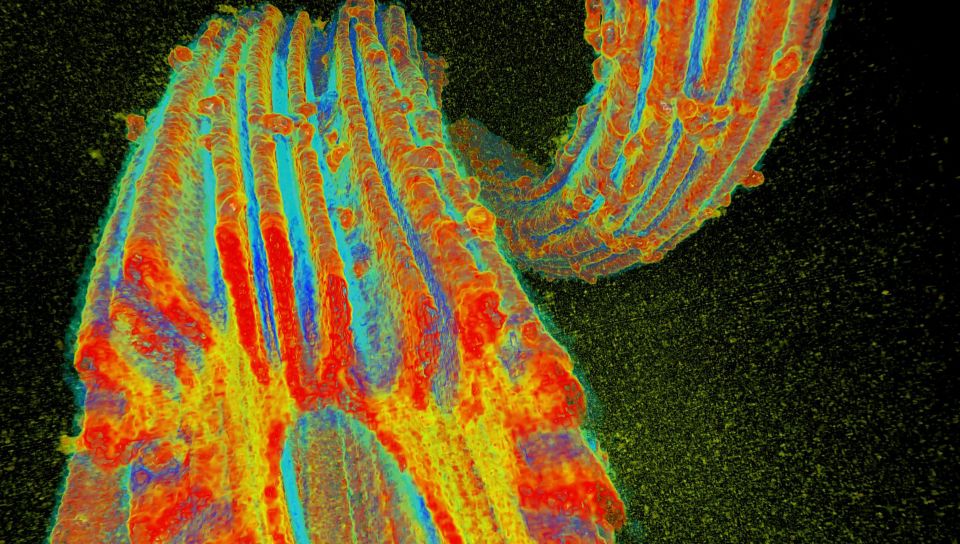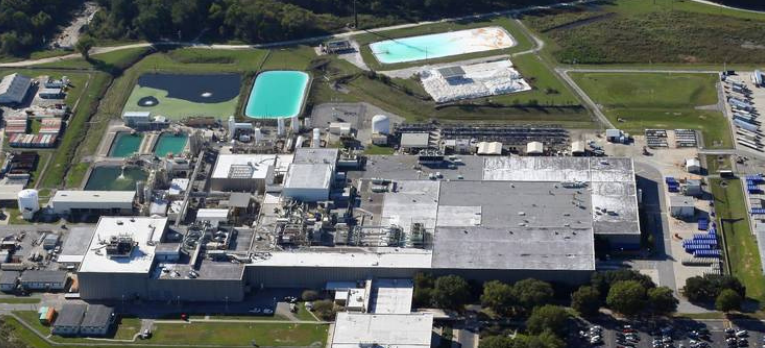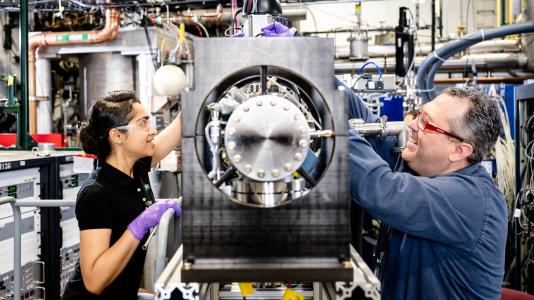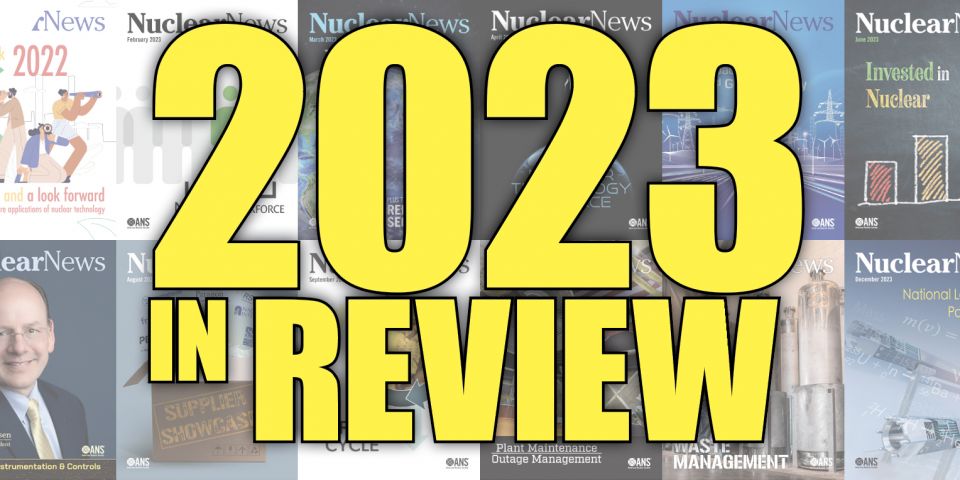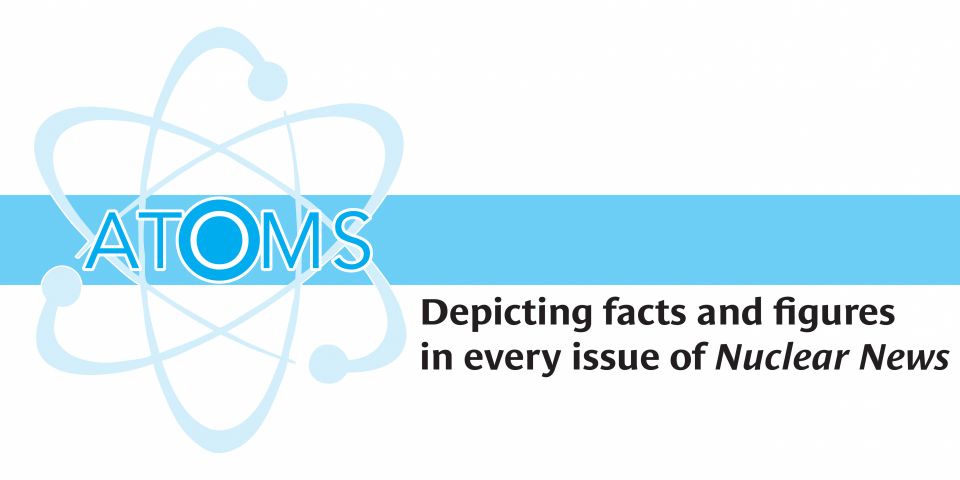Innovations in Fuel Reliability
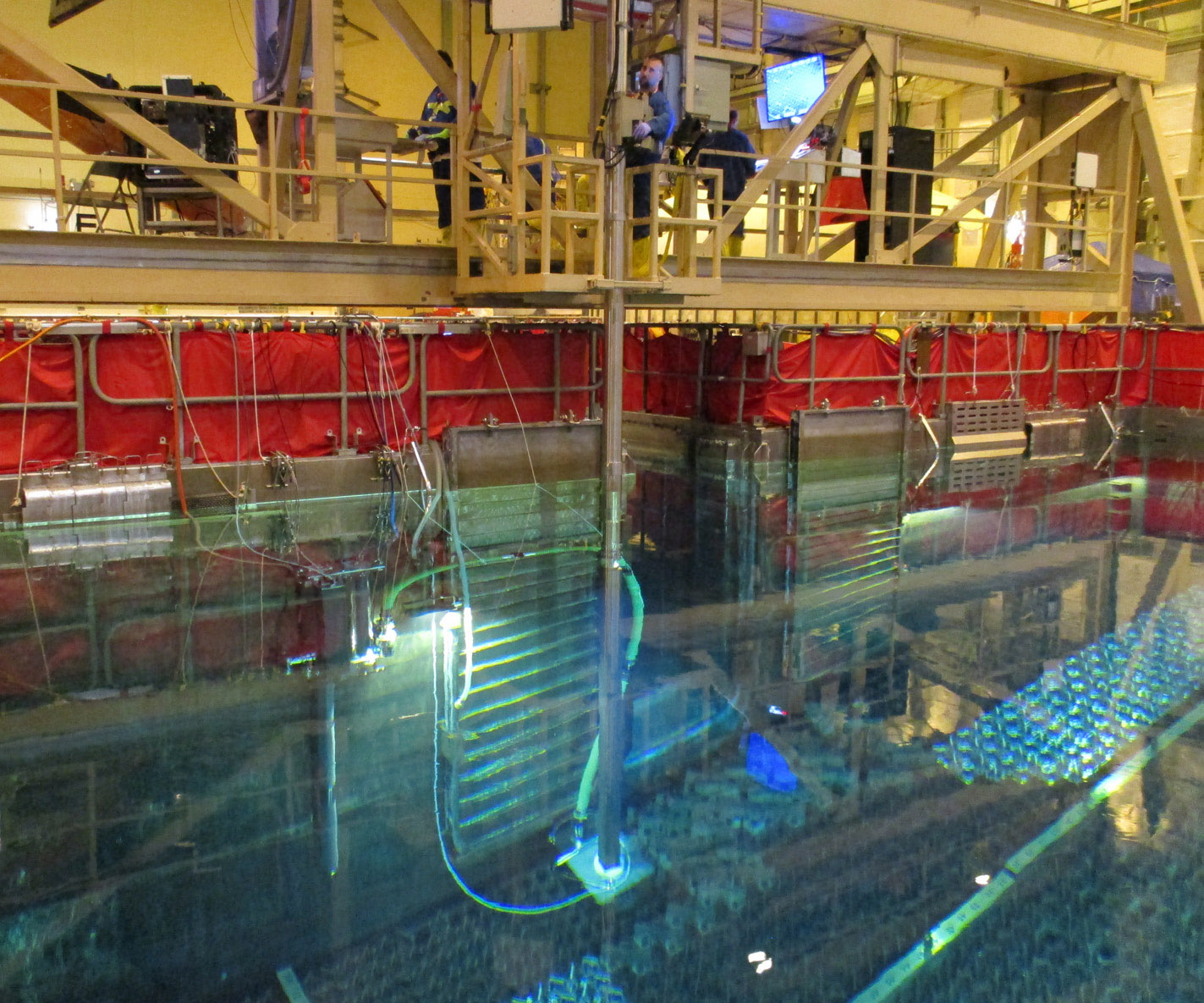
Dominion Engineering, Inc. (DEI) has developed a number of innovative and cost effective tools and services designed to improve fuel reliability.
BNDE Fuel Cleaning
When foreign material enters the reactor system, either during maintenance activities or as components degrade, this material can be transported to the fuel bundles and cause a fuel failure. Debris failures have generally been observed more frequently at BWRs, but also pose a risk for PWR and VVER units. Before debris-induced fuel failures occur, foreign material typically becomes trapped on the lower debris screen in the fuel bundle bottom nozzle for some period of time, providing an opportunity to remove the debris before it causes any fuel damage. DEI’s patented bottom nozzle debris elimination (BNDE) equipment uses a combination of ultrasonic energy and vacuuming to remove and positively capture any debris present. The cleaning process takes about 2 minutes per fuel bundle. and integrates a visual inspection system to perform inspection in parallel. BNDE offers a significant advancement relative to prior generation FOSAR and manual debris removal techniques, which generally took too long to be efficiently integrated with normal refueling activities.
Based on industry experience showing consistent success in arresting active debris-induced fuel failures, units with persistent or intermittent debris issues now consider BNDE as a primary corrective measure. BNDE equipment and operations are shown in Figure 1 (above).
Several plants have also applied BNDE as a preventive measure following known or suspected foreign material ingress, or following maintenance activities where there is a possibility that such ingress could occur. In general, BNDE is often performed as part of plant responses to INPO Event Report (IER) L2-19-6, “Preventing Debris- Induced Fuel Failures.” Once collected, some sites perform analysis of the debris and foreign material collected in order to identify the composition and possibly the source of the material, and to plan any further mitigative measures.
Smart-Sip Fuel Sipping
Because the BNDE fuel cleaning activities above are sometimes performed in response to a debris-induced fuel failure, these activities may be performed concurrently with fuel sipping to identify and isolate leaking fuel bundles. As discussed further below, DEI’s Smart-Sip fuel sipping systems offer a number of design and functional enhancements compared to older vintage vacuum canister sipping equipment and offers a cost effective option for high fidelity fuel sipping both during refueling outages and in preparation for spent fuel cask loading operations.
Very often when a fuel leak is detected, sipping is performed using vacuum canister sipping systems, which are generally regarded as the most sensitive type of fuel sipping equipment currently available. However, older generation vacuum canister fuel sipping systems are sometimes not effective in positively identifying fuel leaks, either because the leaks are very tight (low signal) and/or because the background signal is high due to prior fuel leaks or sipping activities. This can result in lost time during refueling outages and/or complications in planning and execution of fuel reloading prior to restart.
Having delivered vacuum canister sipping systems and services for more than 15 years, DEI developed its latest vintage Smart-Sip technology to address the issues above and also to incorporate design and functional enhancements that address other operational lessons learned. Smart-Sip is a vacuum canistertype sipping system that incorporates the latest available detection technology and a proprietary fission gas removal system to constantly strip out background activity during the sipping process. This system is capable of positively detecting and disposition tight leak signals with much greater precision and fidelity than was previously possible with older vintage vacuum canister sipping systems.
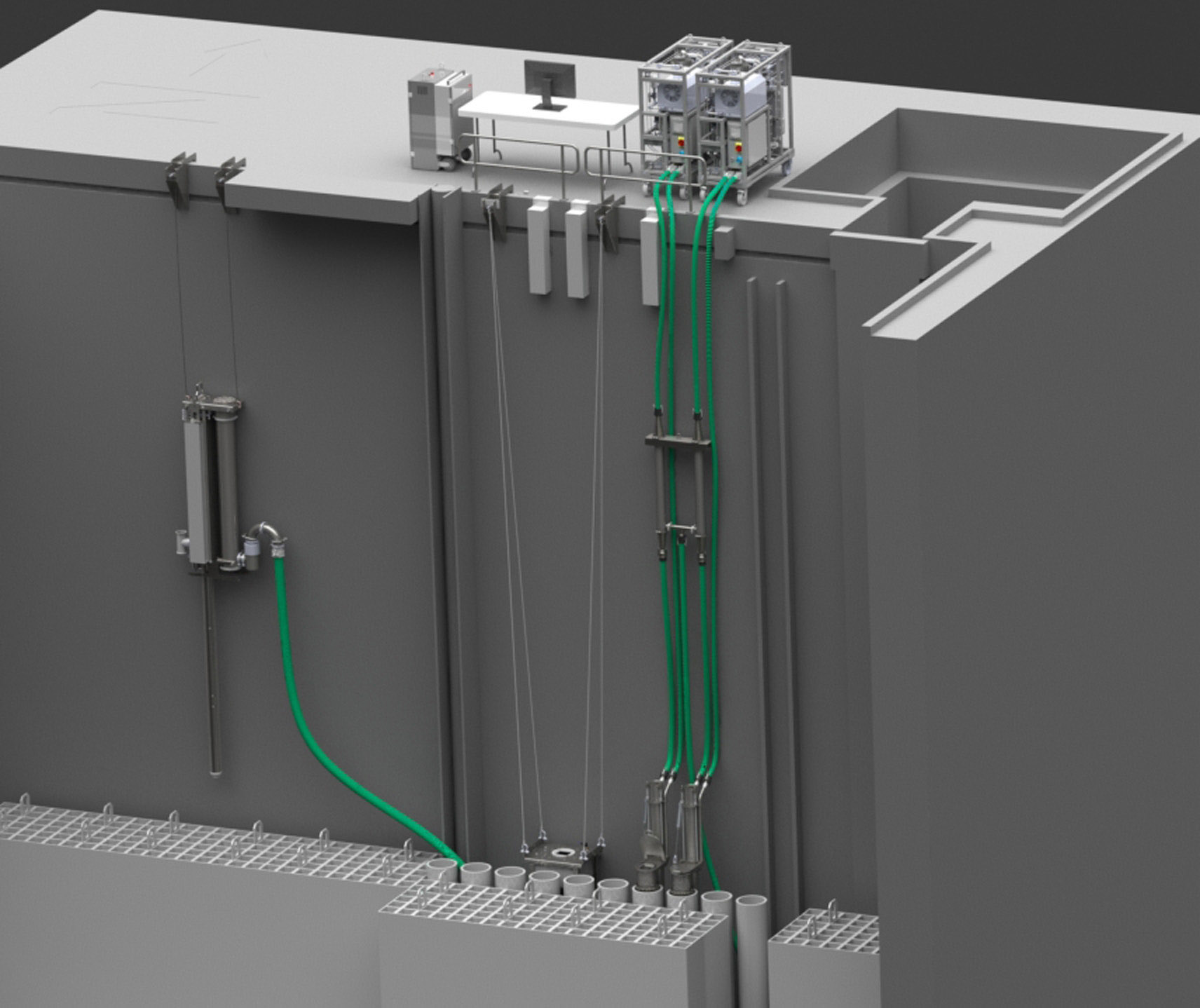
Figure 2
A typical Smart-Sip installation, integrated with BNDE cleaning at a BWR, is shown in Figure 2. The canisters are very compact and can be installed in multipurpose cells or in the upper containment pool in a BWR-6, which provides significant schedule savings when performing sipping during a refueling outage. Larger canisters are also available for sipping PWR fuel and leverage the same Smart-Sip control system for high fidelity leak detection.
Smart-Sip is ideal for situations where high fidelity fuel leak detection is required, but also offers a cost effective option for more routine fuel leak detection applications. DEI offers a variety of Smart-Sip delivery models including turn-key fuel sipping services and fuel sipping equipment sale and rental, with technical support for equipment maintenance, operation and training. Smart-Sip is suitable for use during both refueling outages and in preparation for spent fuel cask loading operations at both PWRs and BWRs, and may be performed in combination with BNDE or HEUFC fuel cleaning or as a separate activity.
For more information regarding Smart-Sip fuel sipping, BNDE fuel cleaning or HE-UFC fuel cleaning, please contact info@domeng.com


